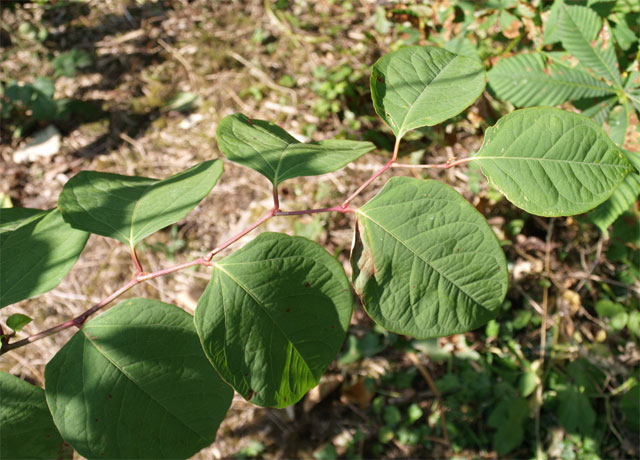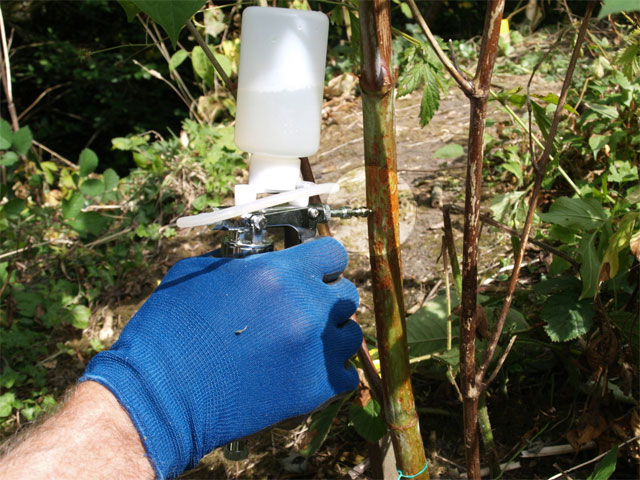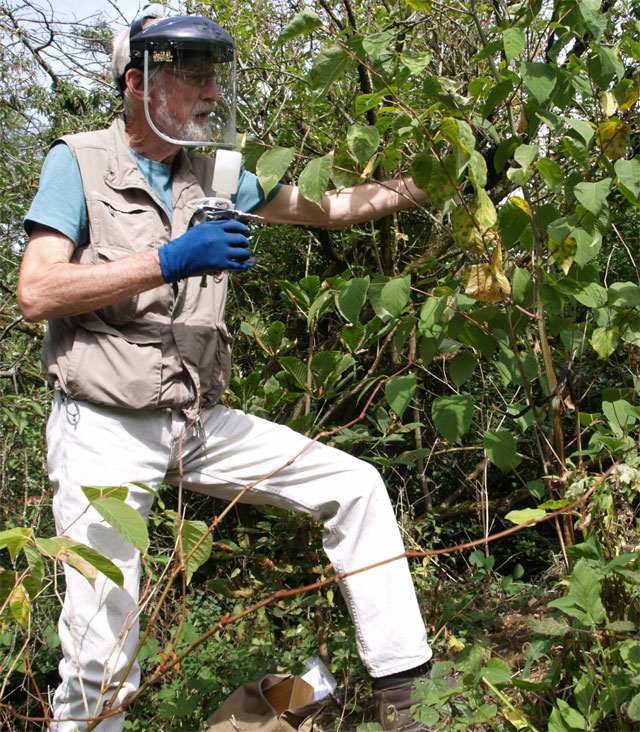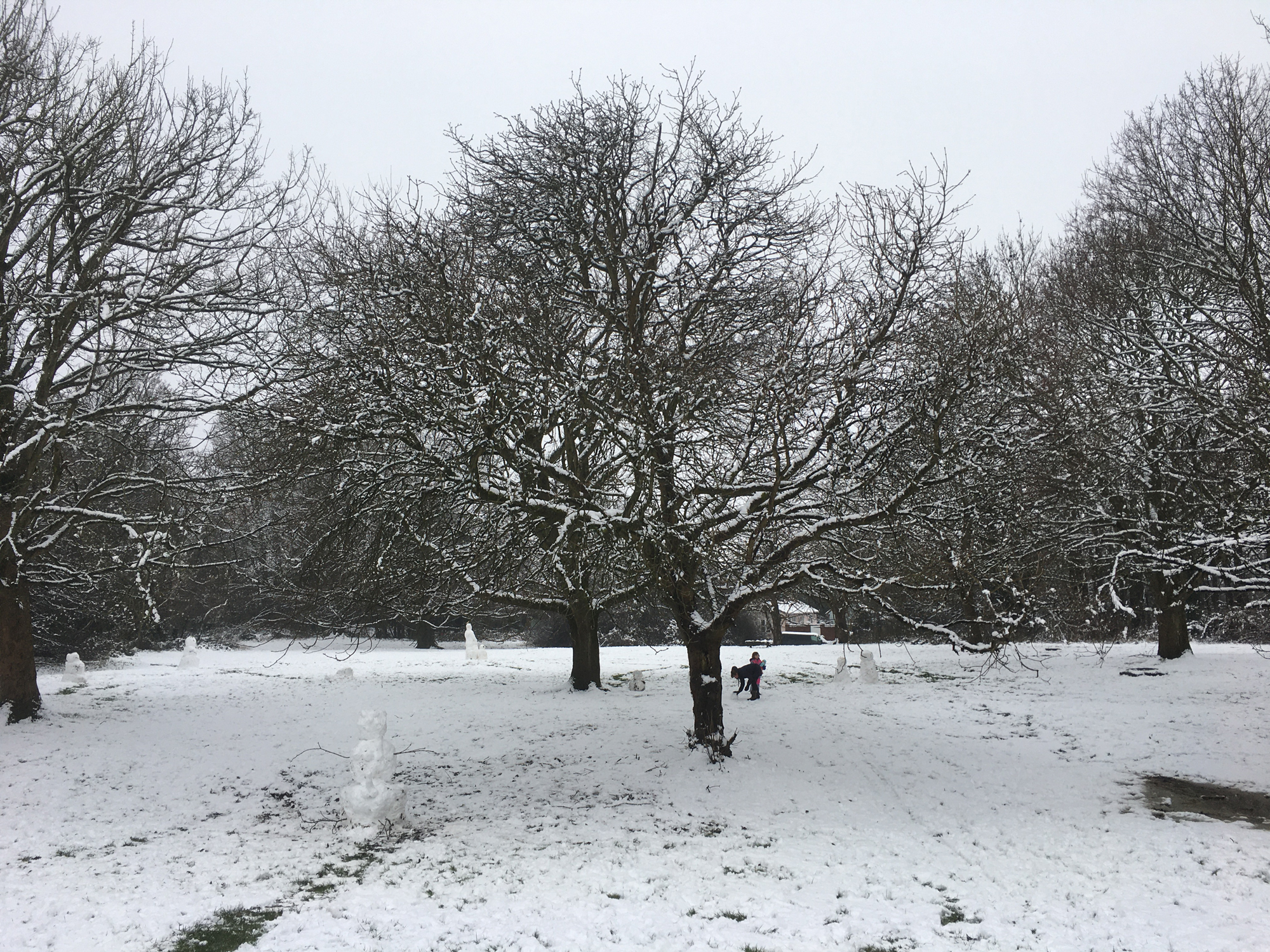
There have been several outbreaks of the not unattractive, but very invasive plant Japanese knotweed on the Heath, mostly near the old Fire Station and behind the Judo Club. It is a major problem in that it grows very rapidly and can cause serious damage, especially to underground structures. A garden outbreak can easily be a reason to refuse a mortgage application.
Because of the difficulty of getting support for its eradication, Friends of Bernards Heath has started work on outbreaks to the south of the old fire station. Find out where by following the instructions in the box below. It is not sufficient to break off the stems since the plant has an extensive underground root system which can easily recover. If removed it be must be disposed of at a landfill site or incinerated.
The recommended method of killing, or at least stunting growth, is to inject the hollow stalks with glyphosate which is marketed as Roundup.



It is very difficult to find all the locations where the knotweed has sprung up under a mass of brambles and nettles, but at least we’ve made a start. We are perhaps fortunate that the knotweed almost meets its match in the dense covering of bindweed on the nettles, hogweed, thistles and brambles. Bindweed is not always bad news – gardeners please note!

Photos: RM
Knotweed Location
Open Google maps, click Google Earth (bottom left), copy the two coordinates in bold 51.76200 -0.33200 and paste these in the search box. The location is best seen by zooming in as far as possible. Another outbreak is present at 51.76198 -0.33228 which may have been left in a heap of discarded building rubble.
